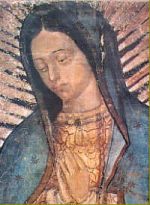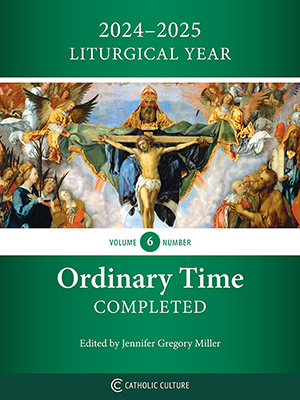An “alternative autobiography” of G. K. Chesterton
By Dr. Jeff Mirus ( bio - articles - email ) | Oct 07, 2025 | In Reviews
Gilbert Keith (G. K.) Chesterton published his autobiography in 1936. I have it on my bookshelf, though it has surely been forty or more years since I read it. As an autobiography it is probably more about his ideas than about his life, just as his biographies of St. Francis of Assisi and St. Thomas Aquinas are probably just as much about his ideas as about their lives; and I suppose the same might be true of his book Twelve Types, which features characterizations of Charlotte Brontë, William Morris, Lord Byron, Alexander Pope, St. Francis of Assisi, Edmond Rostand, Charles II, Robert Louis Stevenson, Thomas Carlyle, Leo Tolstoy, Girolamo Savonarola and Sir Walter Scott.
So perhaps it is just as well that Dale Ahlquist has offered us a new “alternative autobiography” of Chesterton, just published by Ignatius Press: I also had My Hour. The title, of course, is taken from Chesterton’s famous poem “The Donkey”. But stilI I must warn you: This second autobiography is also primarily about…wait for it…Chesterton’s ideas.
You may ask why I keep referring to Ahlquist’s book as an “autobiography”, as if I don’t know the difference between a biography and an autobiography (which must be written by the subject of the book). But I can assure you that it really is an alternative autobiography, for the simple reason that it is a clever, seamless and continuous series of most of the sentences and paragraphs Chesterton ever let fall about himself in all his essays, letters, speeches, newspaper columns and books.
Dale Ahlquist was not only influenced by Chesterton’s writing in his own conversion to Catholicism, but he is the founder and President of the Society of Gilbert Keith Chesterton, as well as the host of the EWTN television series, “The Apostle of Common Sense” (about Chesterton), and the publisher of Gilbert magazine. Ahlquist has spent most of his life locating, reading, and making notes on everything that Chesterton wrote that has survived in any form whatsoever, from correspondence saved in attics to back issues of the newspapers for which Chesterton wrote, wherever they have been found, over the past few generations.
Ahlquist is simply so familiar with Chesterton’s writings—including every comment on what he did (and especially what he thought about things he didn’t do) in every period of his life—that this pre-eminent GKC scholar has been able to string nearly a thousand passages together to form a book which is considerably longer, and probably contains more information about Chesterton, than did Chesterton’s own deliberate autobiographical attempt. Moreover, the book contains not only this continuously woven autobiography drawn from everything else that Chesterton wrote, but a timeline more than a hundred pages long in which Ahlquist lists what Chesterton was doing on every date in his life for which this can be known. For example, there are 36 such dated entries for the year 1910.
Richer and richer
To be strictly accurate, only the first chapter is the autobiography, but that chapter is as long as the timeline and the other eleven chapters combined. Each of the remaining chapters is tagged with a brief phrase from “The Donkey” followed by the more descriptive titles noted below. These chapters, often but not always in Chesterton’s own words, offer different kinds of perspectives, as follows:
- All I Survey (excerpts from Chesterton’s observations on various things from politics and religion to journalism and travel, not to mention life and death);
- An Alternative Biography (which is in a sense Ahlquist’s own portrait of Chesterton, but crafted in a very surprising way)
- The ChesterBelloc (Chesterton’s reflections on Belloc, who was so closely tied with him in the public mind)
- The Devil (perhaps self-explanatory)
- The Accusation (Chesterton’s attempt to refute the commonly-believed accusation that he was anti-Semitic, again drawn from many different writings)
- The Echoes of Words (selections from Chesterton’s poetry which reveal more about himself)
- A Brief Word on Critics (a cohesive compendium of Chesterton’s writings on the topic)
- Manalive (selections written by others about Chesterton, since it was so difficult, actually, to get Chesterton to stick to himself as a topic, as distinct from his ideas)
- The Man Who Was Sunday (Chesterton’s thoughts on such realities as God, faith and mysticism)
- The Convert (being his reflections on his conversion)
- The Path to Holiness (again, Chesterton’s own reflections)
I suspect most readers will respond to Ahlquist’s remarkable achievement in the same way they have responded (or would respond) to anything of a longish sort that Chesterton ever wrote. Many will delight in the master’s extraordinarily clever way of framing his insights so that they nearly always stand in opposition to some more frequent (and less honest) way of looking at things. This is what so many have called Chesterton’s constant use of paradox, though Chesterton himself argued that it was not paradox but only that real common sense which we so seldom encounter and, indeed, so often flee. But whatever it is called, Chesterton’s remarkable juxtapositions always cast a new light on things.
Others will, of course, wonder why Chesterton cannot write in a straight line, more efficiently expending, say, roughly ten percent of the total words. For my own part, while I love Chesterton in both the truths he reveals and the jolly ride he provides, I admit that in a concentrated work like this, it is possible even for the true disciple to wish at times that the key biographical points would emerge with greater rapidity. For fast readers, this will be no problem; for those of us whose eyes twitch across the page only very slowly, taking it in smaller doses might be helpful—though I was never able to lay the book aside for long.
In other words, Dale Ahlquist really did empty the bag into this book. But I have never seen the items dumped from any other bag arrange themselves so easily and completely into such an attractive and entertaining display of what they are in themselves, how much they are worth in total, and—taken as a remarkable whole—what they really mean.
For like the donkey in his famous poem, Chesterton, in his willingness to carry Christ, also had his hour, one far fierce hour and sweet, when there were shouts about his ears, and palms beneath his feet.
Dale Ahlquist, I Also Had My Hour: An Alternative Autobiography of G. K. Chesterton. Ignatius Press 2025. 478pp. Paperback $21.95; eBook $14.27.
All comments are moderated. To lighten our editing burden, only current donors are allowed to Sound Off. If you are a current donor, log in to see the comment form; otherwise please support our work, and Sound Off!








